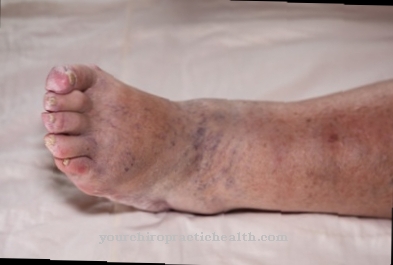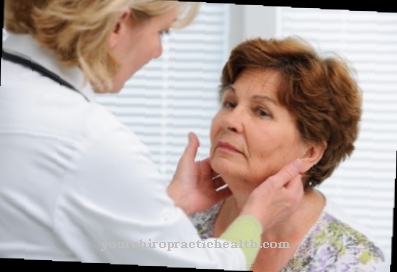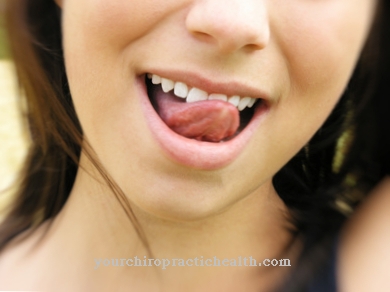By definition it is Starting pain, or also called starting pain, a joint pain that occurs in the initial stage of a movement, e.g. when starting from a standing position or when standing up after sitting for a long time. In the further course of physical activity, the pain usually improves. The start-up pain is a so-called leading symptom for degenerative joint arthrosis, but it can also occur in acute joint inflammation (arthritis).
What is start-up pain?

The start-up pain is the typical symptom of osteoarthritis: while the joints do not cause any discomfort while sitting or lying down, the pain starts the moment the bones are moved.
The consequence for many of those affected is that they prefer to stay seated. However, this may not make sense and it does not ultimately make your health any better, let alone the impact on the quality of life.
Understanding the phenomenon of "initial pain" and getting to know the possible approaches of personal and medical (self) therapy is worthwhile for all those affected and is the aim of this medical article.
causes
Osteoarthritis is a chronic joint disease that ultimately comes about through degeneration, i.e. wear and tear of the joint cartilage. It is therefore a disease of the aging person and in the vast majority of cases affects the hip (coxarthrosis) and knee joint (gonarthrosis).
The background to the disease is a permanent overload of the articular cartilage. Our joints are actually not designed by mother nature to allow us to move them for life on asphalt, where the constant shock absorption on the hard surface causes small micro-damage in the joint cartilage in the long term, which can then develop into a serious problem after years. In addition, today, on average, people are getting older than they used to be, which is one of the reasons why degenerative diseases are of increasing importance in the development of society as a whole.
Other causes of osteoarthritis can be competitive sports: By repeatedly running marathons on hard asphalt, you naturally damage your cartilage even more and you may experience joint problems such as the typical starting pain at a younger age.
Misalignments such as bow-leg or knock-knees also add to the strain on the corresponding side of the joint, especially in the knee joint. Joint injuries or systemic diseases such as gout or diabetes often years ago can be the cause of osteoarthritis. Last but not least, there are also genetic influences, so one is more prone to osteoarthritis than the other.
Another cause is not infrequently the patient's obesity and lack of exercise. People who sit a lot and rarely move are more likely to experience morning starting pain. A change in diet (approx. 80% of the diet should consist of varied vegetables, a further 20% fresh fish, fruit, nuts and berries, all industrially processed foods should be avoided as far as possible, water, tea and a little coffee are recommended as drinks. Alcohol, smoking and the consumption of sweets should be stopped) and, in consultation with the doctor, moderate exercise or sport (e.g. an hour's quick walk a day or alternately swimming) can be helpful here.
Diseases with this symptom
- Chondropathy
- Hip arthrosis
- Pubic bone inflammation
- arthrosis
- Osteoarthritis of the knee
- Polyarthritis
- Inflammation of the joints (arthritis)
- rheumatism
- Polyarthrosis
Diagnosis & course
Since osteoarthritis is a slowly progressing degeneration, the symptoms often increase over the years: The Starting pain is often an early symptom and is usually ignored because it improves a few seconds after it occurs - the joint "runs in", synovial fluid is distributed in the joint and can dampen the initially painful cartilage damage with further movement.
After the next break, however, the joint hurts again when starting - in the long run, the pain wears down most people and then at the latest leads to a presentation to the doctor and a diagnosis of osteoarthritis.
In terms of differential diagnosis, the doctor must first think of arthritis, i.e. inflammation of the joints. This can occur through bacterial or viral infection or as part of a rheumatic disease. The difference, however, is that the pain is usually not the typical initial pain of osteoarthritis, which improves after a short time.
Arthritic pain remains permanent, rheumatic pain typically occurs as "morning stiffness" at the beginning of the day and then improves after a few hours during the day. It is important, however, that osteoarthritis as so-called "activated osteoarthritis" can change into an acute inflammatory state and then also cause permanent pain.
In addition to the precise questioning of symptoms, the doctor, ideally an orthopedic surgeon, finally takes an X-ray of the affected joint and the adjacent bones and can use this to diagnose osteoarthritis.
Complications
Startup pain is the first sign of osteoarthritis or arthritis and can lead to some joint complications. First of all, the initially only slight pain develops into an inflammation of the joint, i.e. activated osteoarthritis, which then leads to increasing pain, especially when standing up. In the further course, the pain center then shifts from the joints to the entire limb.
Since the occurrence of start-up pain is more difficult, the mobility of those affected may be severely restricted and there may be limping and other movement and gait disorders such as stiff limbs or Trendelenburg limps. The pain occurs when you stand up or after standing for a long time and disappears again after a few seconds. This can quickly become a burden for those affected and negatively affect the quality of life.
Particularly when the joints are cold, hot or under great strain, such as those that occur when cycling or jogging, the start-up pain increases and the gait disorders mentioned lead to unnatural movements. This results in further joint damage. Full-blown tendinitis can also develop from the pain, depending on the age and constitution of the patient. When treating start-up pain, the prescribed anti-inflammatory drugs can lead to permanent damage to the gastric mucosa and other side effects, which is why conservative therapeutic measures should be preferred here.
When should you go to the doctor?
Start-up pain occurs right at the beginning of a movement, for example when getting up after sitting or when running after standing. They always indicate a joint disease, usually a wear and tear disease. Those affected often only go to the doctor when the osteoarthritis is well advanced. But early treatment could have a positive effect on their course.
Since osteoarthritis is one of the most common joint diseases, there are many effective treatment concepts available today. The initial pain is typical of osteoarthritis in the early stages. After a few minutes the pain is over and the person concerned forgets about the symptoms. This behavior is unfavorable because once the cartilage damage is present, it does not heal on its own. If the osteoarthritis remains untreated, pain will soon arise after minor stress. Secondary diseases occur, the joints swell and movements become increasingly difficult. A diagnosis can be made at an early stage with ultrasound or X-ray examinations.
Therefore, those affected should consult an orthopedic surgeon at the first signs of starting pain. The pain can be treated with rheumatic drugs. Restoring joint mobility is more important than fighting pain. The patient must be made mobile so that the joints do not stiffen. Only through exercise are these supplied with synovial fluid, which contains important nutrients and ensures the health of the joint. Age and menopause are risk factors.
Doctors & therapists in your area
Treatment & Therapy
The therapy consists first of all in relieving the stress on the joint; if you are overweight, this means losing weight. Physical measures can alleviate the start-up pain, in addition to heat or cold applications and massages, the focus is primarily on physiotherapy, which is intended to improve joint stability by strengthening the muscles and improving the synovial fluid by constantly keeping the joint in motion.
In principle, gentle movement is also a good thing for osteoarthritis, sports without shock loads such as swimming or cycling are certainly the optimal case here. Aids such as shoe insoles or a walking stick can also help alleviate the symptoms of starting pain.
Anti-inflammatory drugs such as ibuprofen can be used as medication, but etoricoxib is better in the long term. However, especially in the case of ibuprofen, they should be consumed with caution when taken continuously, as they damage the gastric mucosa in many people. The above measures should therefore actually be preferred to drug pain therapy whenever possible.
Measures such as injecting hyaluronic acid into the joint should also be viewed critically: There is still no credible scientific evidence of its effectiveness, and it is not uncommon for the doctor to inject germs into the joint space, which then leads to acute arthritis. But many people certainly felt better after this therapeutic measure.
After all, surgical measures are the end of the story: First of all, sometimes "minor" joint irrigations help for a short time, but in the long term the implantation of an endoprosthesis is almost always necessary as a joint replacement. A big step, but one that brings very good results for most people and makes you forget the initial pain just a few days after discharge from hospital.
Outlook & forecast
Start-up pain occurs quite often in athletes and in old age. The prospect of a cure is very good if the person concerned is ready to incorporate a few exercises into their everyday life to get rid of the starting pain.
Athletes who do not warm up enough can experience starting pain while sprinting and other fast-paced sports. Even people who sit all the time and seldom move will first have to struggle with movement problems, which in the end can be expressed as start-up pain. An ointment can help relieve pain in the short term. In the longer term, however, these are not solutions.
If you have to struggle with starting pain as an athlete or in everyday life, you should definitely contact an orthopedic surgeon. With targeted exercises and massages, he can loosen the affected areas and thus stimulate healing. During this time you should not put any additional strain on the affected areas. For athletes, this means that they need to take a break if they want the treatment to be positive.
Pain on starting can affect anyone. It is only important that you notice the symptoms quickly. Then the prognoses look good and you can heal the affected areas with a few exercises.
prevention
In principle, the prophylaxis of osteoarthritis already includes hip ultrasound in babies, with which congenital deformities can be detected so that these do not later lead to osteoarthritis. Even in adolescence and adulthood, one should make sure that no misalignments of the legs creep in - these can, if necessary, be treated with physiotherapy with a lot of effort.
Unilateral and monotonous loads on the joints should be avoided, as this will permanently damage the joints. If you want to do sport that is gentle on the joints, you should jog on moor and forest paths instead of on asphalt or concentrate on swimming and cycling.
You can do that yourself
The so-called starting pain can be uncomfortable and are usually early indicators of the onset of arthritic changes in the affected joint. Self-help and "correct" behavior in everyday life help to reduce the pain again or at least not to let it get worse. Because start-up pain usually indicates breakdown processes in the joint cartilage or inflammatory processes, it is important to move the joint under reduced stress. This promotes blood circulation, the articular cartilage is better supplied, and degradation substances can be better removed via the blood and lymph.
A good supply of minerals and micronutrients is helpful so that the chondrocytes in the articular cartilage can do the appropriate work or at least the breakdown process is slowed down or stopped. If the start-up pain is not triggered by inflammatory rheumatic processes, the application of heat through passive or active heat application is helpful to reduce the start-up pain. The supply of heat allows the muscles to relax and the metabolic processes are significantly accelerated, so that the supply of nutrients to the articular cartilage is also improved.
If the initial pain is caused by inflammatory reactions, cooling measures such as cold compresses are helpful instead to curb the inflammatory reactions. One-sided, static loads and chronic stress have an unfavorable effect, because one-sided muscle hardening and shortening can set in, which lead to one-sided joint stress and increase the risk of arthrosis.






.jpg)




















